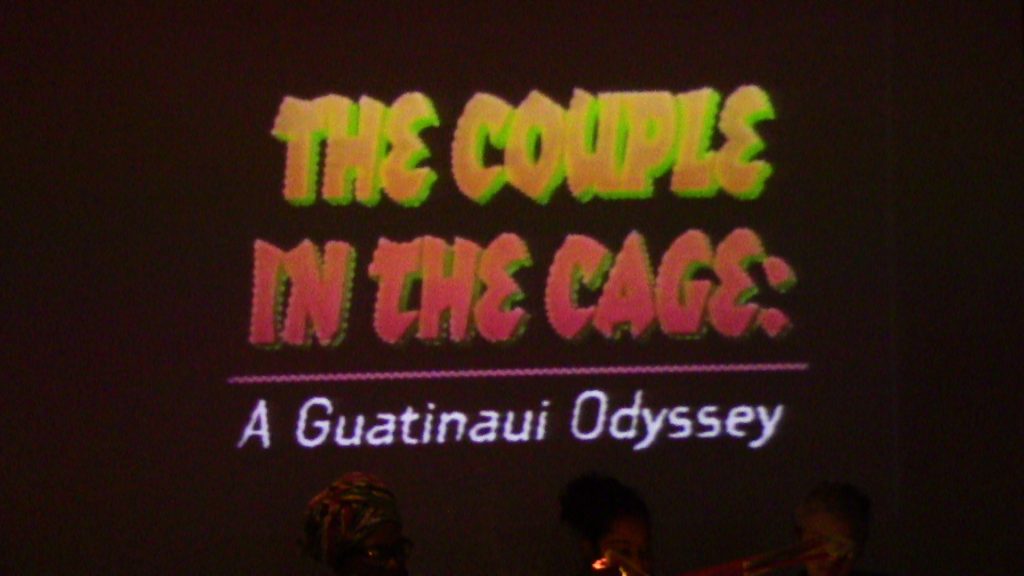In 2016, the University of Arts and Design in Linz, Austria hosted ‘Metafiesta,’ a significant event featuring a series of research talks, debates, artistic happenings, and performances. This symposium was the outcome of a research collaboration with the Cultural Studies department, delving into a wide array of discussions and artistic expressions. It acted as a platform for intellectual and artistic exploration, aiming to create meaning and significance by its very occurrence.

‘Metafiesta’ was a profound invitation for both individuals and collectives to participate, share, and celebrate their existence. It sought to stimulate transformations, urging attendees to explore new parameters of significance. It stood as an open canvas for learning, emphasizing participation as the core learning method.
The symposium was graced by an array of esteemed guests, each contributing their unique perspectives:
Prof. Dr. Martin Zillinger, from the Department of Social and Cultural Anthropology at the University of Cologne, offered insights on ‘Ambiguous Festivities: On Trance, Subjectivities, and Graduated Publics in Morocco.’
Dr. des. Anja Dreschke, Assistant Professor for Media Anthropology at Heinrich Heine University Düsseldorf, accompanied Martin Zillinger’s keynote.
Mag. Phil. Thomas Marschall, Director, Curator, Writer, and Lecturer, presented a performative lecture on ‘Fiesta as a Roundabout’ as a PhD Candidate at the University for Fine Arts Vienna, Department for Postcolonial Studies.
Marissa Lôbo, a migrant black activist and artist hailing from Bahia, Brazil, engaging in artistically critical education related to anti-racist or anti-sexist struggles, performed and lectured on ‘Rindo Alto Na Cara Da Sociedade’ alongside activists Edith Paule and Xhejlane Rexhepi as part of the Post Conceptual Art Practices at the Academy for Fine Arts in Vienna.
Sam Bunn, an artist working across installation, performance, and film, presented ‘A Sketch for Some Future Party That Don’t Stop, Like Whale Song Shouldn’t.’
Additionally, Jeff Boudreaux participated as the leading drummer of his brass band, adding a unique musical dimension to the symposium.
The ‘Metafiesta’ symposium encapsulated a vibrant confluence of academic inquiry, artistic expression, and cultural celebration, fostering a dynamic environment for discourse and engagement.
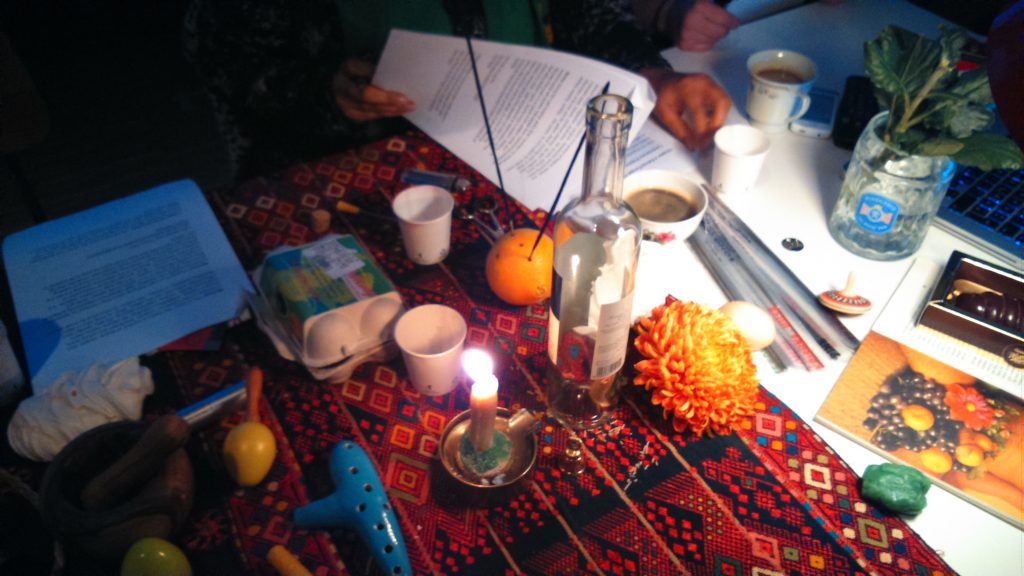
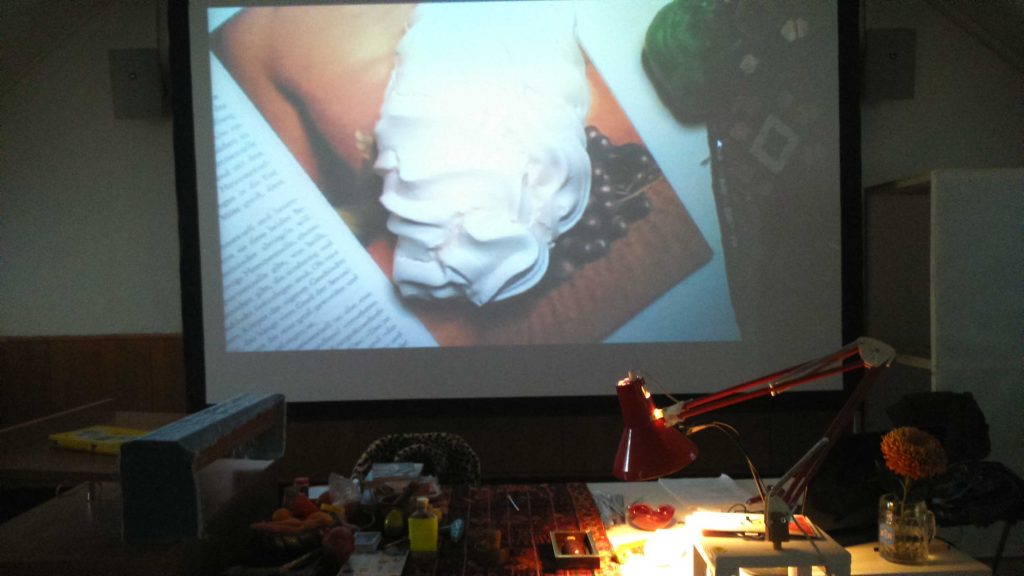
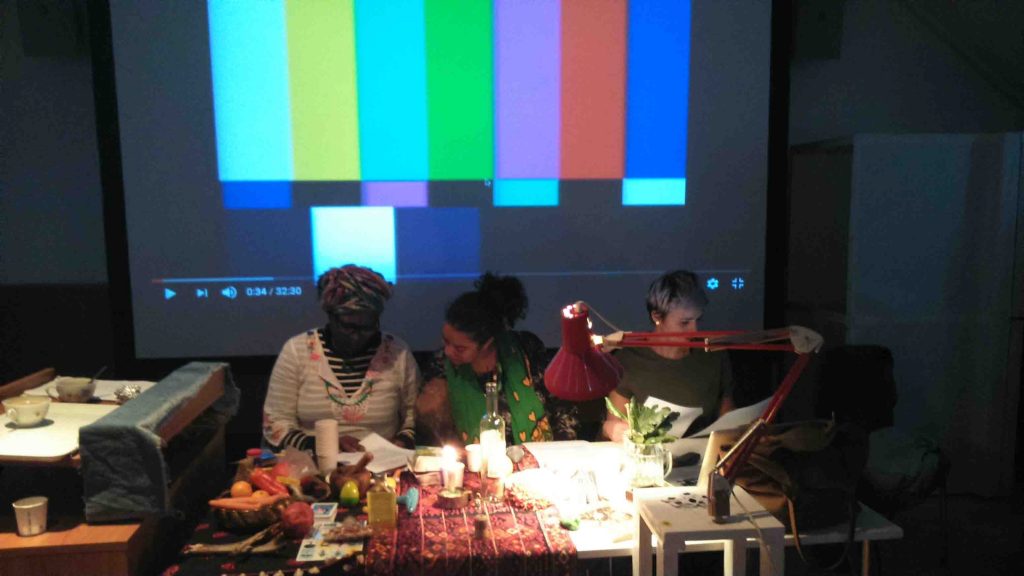


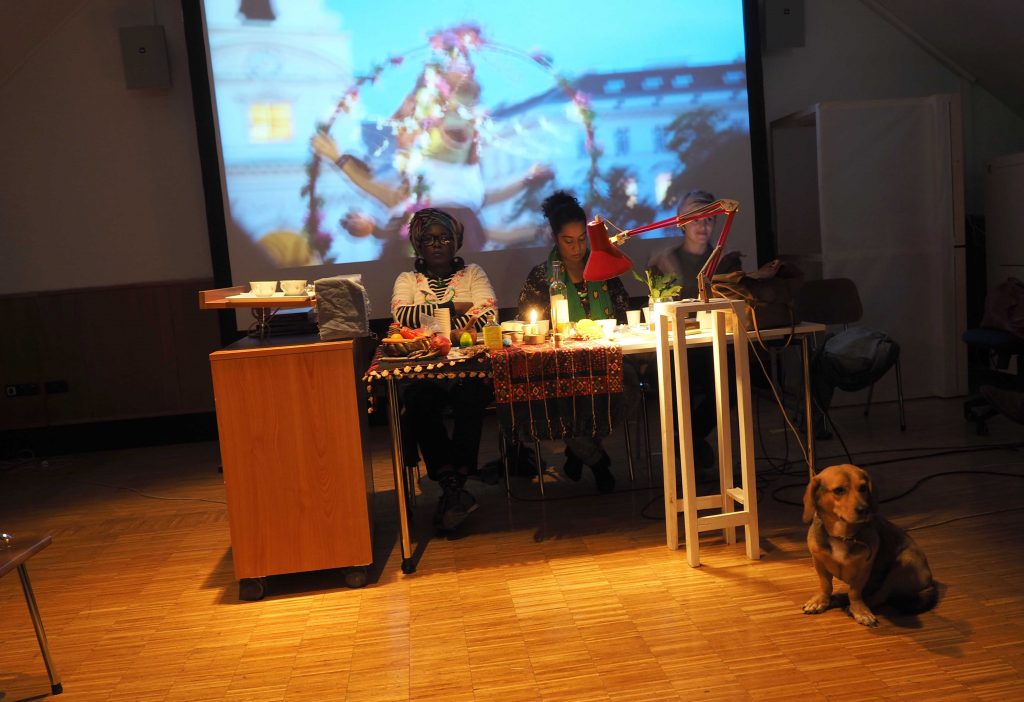
Fiestas stand as significant symbols of human cultural expression, enduring the test of time and transcending the constraints of temporal, spatial, and functional limitations. Their ability to alter the landscape of urban settings, blur the delineations of identity, and perpetuate connections with tradition makes them a noteworthy component of a modern cultural renaissance.
The resurgence of fiestas is intricately woven into a broader narrative of a global resurgence of religious practices, challenging conventional paradigms regarding modernity and the demarcation between religious and state affairs. This rekindling of religious activities is intimately connected to the evolving terrain of new media and the dissolution of boundaries within contemporary societies. The intersection of fiestas, revitalized religious expressions, and the evolving media landscape encapsulates a pivotal element of our modern cultural fabric.
In the realm of celebration, there are two main categories: private fiestas and public fiestas. Private fiestas are intimate gatherings, reserved for a select group of individuals. They hold the power to formalize bonds and create demarcations between those invited and those excluded. Private fiestas take place in closed or privatized enclosures, offering a sense of exclusivity. On the other hand, public fiestas, like carnivals and processions, come to life in open and accessible spaces such as city streets and squares. They transform these urban spaces into lively and central agents in the celebration, reaching a level of protagonism that turns them into more than just passive settings. Streets and squares shift from their everyday roles as thoroughfares to become stages of collective expression and cultural cohesion.
While public fiestas can serve various purposes, such as social stratification, the expression of popular identity, or the enhancement of family prestige, they are also increasingly embracing social and psychosocial aesthetics. Some events, like International Women’s Day and Pride Parades, have shifted toward a more festive nature while still carrying essential social and political messages. Even sporting events and cultural gatherings like football matches and concerts have embraced elements of the fiesta, creating communal experiences that extend beyond their primary functions.
Fiestas, with their power to transform urban spaces and bridge communal divides, are entwined in a contemporary narrative of cultural revival and the re-emergence of religious practice. The discussion on the «return of the religious» has unfolded on a global scale, challenging conventional narratives of modernity and the separation of church and state. The reinvigoration of religious practices is deeply linked to the altering landscape of new media and the unraveling boundaries in today’s societies. The intersections between media and religious practices are not novel. Edward Tylor, a pioneering figure in cultural anthropology, delved into Spiritualism in the 19th century, recognizing its cultural implications and investigating its alleged manifestations. Media, in their essence, transcend time and space, restructuring the shaping of ritual agency and mediating religious experiences. They’re integrated into established cultural and body techniques, yet often perceived to recede into the background, constituting but not overwhelming the conveyed experience.
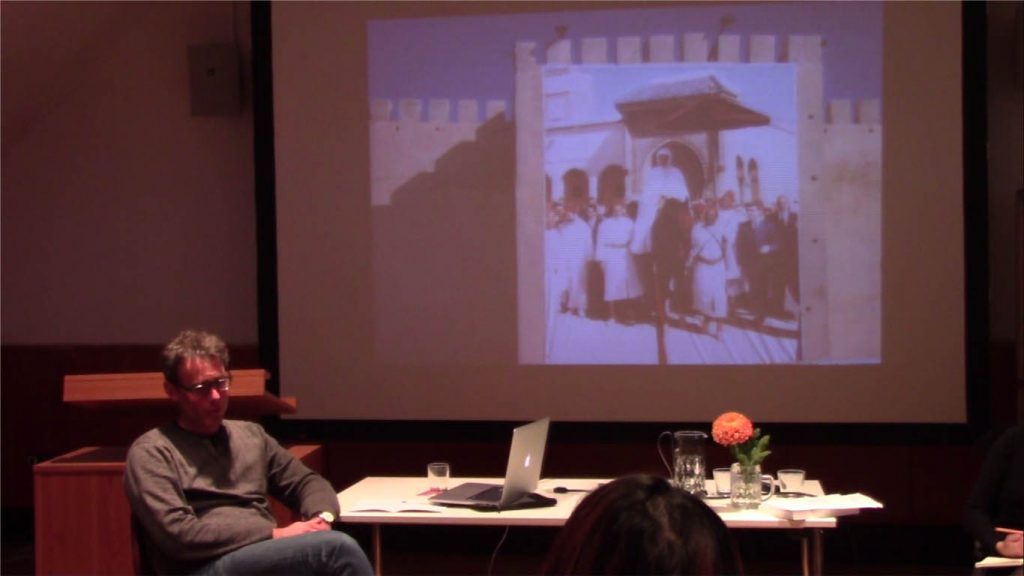

In the context of today’s globalized world, migration flows have reshaped religious landscapes. The resurgence of religion, epitomized by movements such as Pentecostal Christianity, transnational Islam, Hindu nationalism, and spirit-possession cults, is intricately linked to the fluidity of transnational networks and the dissemination of religious messages. New media technologies play a pivotal role in the transmission and circulation of religious beliefs and practices across local and global audiences, enabling the interconnectedness of diverse religious movements.
Seemingly, the resurgence of religious practices and the fluidity of modern societal boundaries resonate with the themes concerning the exclusionary tendencies within the queer movement. Just as the text discusses the rekindling of religious activities intertwined with the evolving media landscape, performance as art practice may well challenge the limitations and exclusions in the context of the queer space, highlighting the need to bridge communal divides and embrace a more inclusive approach.
The intersection between fiestas and the evolving media landscape, depicted in the text, echoes the use of performative interventions to critique the exclusivity within the queer space. The idea proposed here is to disrupt norms and regulations imposed on identities, similar to the way public fiestas transform urban spaces into stages of collective expression and cultural cohesion. The text’s exploration of the shift from everyday roles of streets and squares to active agents of celebration aligns with the emphasis on disrupting the normative approaches to sexual liberation within the queer space.
The text’s discussion of the dissolution of boundaries within contemporary societies, particularly concerning the «return of the religious» and the role of new media, mirrors the challenges of emphasizing the need to include diverse perspectives and challenge exclusivity within the queer movement. The merging of new media and religious practices, as discussed in the text, reflects the intertwining of media and collective body politics.
The evolving religious landscapes in a globalized world, as highlighted in the text, mirror the diverse perspectives and movements attempted to acknowledge and include within the queer space. It is to reflect the impact of new media technologies in shaping and disseminating religious and cultural beliefs across local and global communities, emphasizing the interconnectedness of diverse movements and perspectives.
Therefore, the interconnected themes of evolving cultural landscapes, media’s role in reshaping rituals and experiences, and the evolving nature of societal boundaries depicted in the text align with the messages conveyed through Marissa Lôbo’s critical interventions in the realm of the white queer space. Both speak to the necessity of inclusivity, challenging boundaries, and embracing diverse perspectives within contemporary cultural and societal narratives.
Fiestas, whether public or private, act as agents that blur the lines of societal boundaries and offer collective experiences. This mirrors the essence of the «Politics of Ecstasy,» which suggests that experiences leading to states of ecstasy challenge established norms and can influence broader social and political paradigms. Moreover, the intersections between fiestas, revitalized religious expressions, and the evolving media landscape echo the essence of Leary’s concept. The evolving religious landscapes in a globalized world, alongside the role of new media in reshaping rituals and disseminating beliefs, mirror the «Politics of Ecstasy» in the sense that they challenge conventional narratives, dissolve boundaries, and emphasize the interconnectedness of diverse movements and perspectives.
The dissolution of boundaries in contemporary societies, particularly concerning the «return of the religious» and the role of new media, aligns with the core idea of the «Politics of Ecstasy,» advocating for the breaking down of societal norms and challenging exclusivity. It reflects the need for inclusivity and the embracing of diverse perspectives, resonating with the concept of altered consciousness leading to societal transformation.
In summary, the exploration of fiestas, religious resurgence, and new media reflects the essence of the «Politics of Ecstasy.» Fiestas, both private and public, blur societal boundaries and offer collective experiences, echoing the concept’s premise of challenging norms through altered experiences. The intersections between fiestas, religion, and media mirror the «Politics of Ecstasy,» emphasizing inclusivity, diversity, and the transformative potential of altered consciousness in shaping societal narratives. This interconnectedness underscores the power of collective experiences in challenging exclusivity and shaping diverse perspectives within contemporary society.


